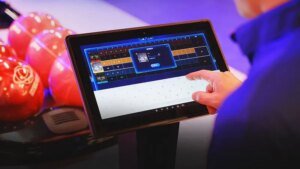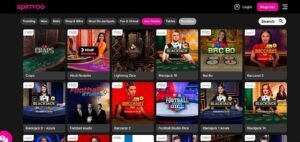Language access should never depend on who is in the room. That is the promise of Video Remote Interpretation. If you can bring in an interpreter right away, the talk keeps rolling and choices get made. For Deaf signers, VRI means clear video, immediate access, and full participation no waiting on an onsite slot. For teams, it trims delays, helps with compliance, and makes multilingual moments feel ordinary.
What Video Remote Interpretation is and how it works
With Video Remote Interpretation, a secure video link brings in a qualified interpreter. The system captures speech and signing, and the interpreter delivers the meaning between them on the spot. Because the interpreter is remote, the service scales to many sites and time zones. When a conversation starts, the interpreter is invited to join, and everyone sees and is seen clearly enough to follow facial expressions and body language, which are essential features of sign languages.
Why this matters for Deaf individuals
Access is about more than words on a screen. Deaf signers rely on a full visual channel that includes handshape, movement, facial grammar, and eye gaze. Video Remote Interpretation puts that channel in the meeting as soon as it is needed. It helps in three ways.
- It reduces wait time. Instead of postponing a visit or a briefing, the interpreter appears when the conversation starts.
- It preserves visual nuance. A properly placed camera, good lighting, and stable bandwidth allow the signer to read expression and emphasis, not only vocabulary.
- It supports choice. In many settings a Deaf professional may prefer Video Remote Interpretation for routine appointments, while reserving onsite support for complex or sensitive matters.
Regulators and advocacy groups frame this as effective communication. If someone needs it, covered entities should provide the right help like a qualified interpreter so conversations are just as effective. Pick the tool that fits the moment, and don’t let the tech become the problem.
VRI and VRS are not the same thing
It is useful to separate Video Remote Interpretation from Video Relay Service. VRS connects a Deaf signer and a hearing person by telephone through a relay interpreter. VRI connects everyone in the same conversation through a video meeting or in person with a screen present. VRS is regulated as a subscriber service while VRI is typically a paid service used by organizations to meet communication duties under civil rights law. Knowing the difference helps teams pick the right path for a given interaction.
Where industries see the most impact
-
Healthcare
Clinicians can add an interpreter to the room at intake, during consent, or at discharge. Clear communication reduces repeat visits and improves adherence. When camera placement and lighting follow best practices, patients can see both provider and interpreter and can ask questions without strain.
-
Education and training
Advising sessions, parent conferences, and campus services can run on time. In workforce training, instructors can schedule an interpreter for live classes and keep transcripts or notes for later review. Learners participate in real time rather than waiting for a separate session.
-
Public services and justice
Courts, law enforcement, and social services need reliable access that respects privacy and accuracy. Video Remote Interpretation allows agencies to cover many locations from a central pool while still using interpreters who understand legal registers and confidentiality rules.
-
Corporate and field operations
Town halls, safety briefings, and customer meetings benefit from an interpreter who joins as needed. Managers can serve mixed teams across multiple sites without forcing Deaf staff to wait for a reschedule.
Implementation essentials that protect quality
Quality does not happen by accident. A few operational habits make a visible difference for Deaf participants.
- Camera and placement
Use a camera angle that frames the interpreter from waist to head with consistent lighting. Avoid backlighting. Keep visual clutter behind the interpreter to a minimum. - Bandwidth and audio discipline
Stable connections and headsets for hearing speakers reduce lag. People should avoid speaking over one another. Turn taking helps both interpreters and participants. - Visual access to the speaker
When possible, show both the interpreter and the primary speaker. Deaf signers read facial cues from the speaker as well as from the interpreter. - Prepare materials
Share topic outlines or key terms before the session. Interpreters can review terminology so that registers and names appear accurately during the meeting. - Know when onsite support is more appropriate
Some interactions require a different setup, for example emergencies with limited space for screens, high motion environments, or very sensitive conversations. Build a simple decision guide so staff can choose wisely.
Compliance and ethics
Civil rights guidance centers the idea of effective communication. The obligation is to make communication with people with disabilities as effective as it is for others. That can include qualified sign language interpreters, real time captioning, and other aids. For Video Remote Interpretation, minimum expectations in medical settings include adequate bandwidth, high quality video, and staff who know how to set up the equipment so the Deaf person can see and be seen. Documentation should reflect when an interpreter was provided, what aid was chosen, and how privacy was protected.
Remember that captions and transcripts are useful but they are not always sufficient for signers. Many situations still require an interpreter because sign languages are full visual languages with their own grammar and discourse patterns. Choose the aid that preserves meaning for the person in front of you.
Measuring impact
Leaders will ask whether the program is working. Track simple signals.
- Time to interpreter connection from the moment a need is identified.
- Completion of consent, intake, and service steps without follow up calls.
- Participant satisfaction from Deaf users gathered in short surveys.
- Reduction in rescheduled appointments or repeat visits linked to misunderstandings.
- Staff confidence with setup measured through quick post session checklists.
These metrics show whether Video Remote Interpretation is improving outcomes and where the workflow needs refinement.
A short plan to get started
- Week one to two:
Pilot Video Remote Interpretation in one high impact workflow such as clinic intake or customer onboarding. Train staff on camera placement and join steps. - Week three to four:
Publish a one page quick start with screenshots. Add a short glossary for names and technical terms. - Week five to six:
Expand to a second workflow. Store session notes and decisions in a secure location. Review the data and adjust.
Conclusion
Access should be immediate, accurate, and respectful. Video Remote Interpretation helps Deaf individuals participate fully and helps organizations serve people well at scale. If your team is ready to turn language access into a dependable part of everyday operations, partner with TransLinguist. Our interpreters and workflow specialists design programs that meet effective communication standards, protect privacy, and fold neatly into your existing tools so every conversation can move forward with clarity.







